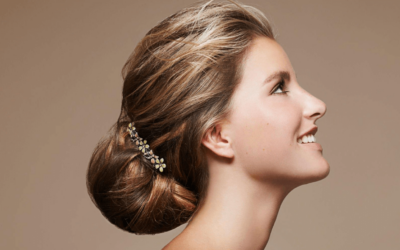Hair color can be a powerful form of self-expression, allowing you to transform your look and showcase your personality.
Whether you want to cover gray hair, enhance your natural color, or try a bold and vibrant shade, coloring your hair can be an exciting and creative process.
In this comprehensive guide, we will take you through everything you need to know about how to color your hair like a pro. From choosing the right color to preparing your hair and applying the dye, we’ve got you covered.
Understanding Hair Color Basics
Before diving into the process of coloring your hair, it’s essential to understand some basics about hair color.
Hair color is determined by the presence of pigment molecules called melanin, which are produced by special cells in the hair follicles.
There are two types of melanin: eumelanin, which gives hair black or brown color, and pheomelanin, which provides red and blonde hues.
Choosing the Right Hair Color
Choosing the right hair color is crucial to achieve your desired result. Consider factors such as your skin tone, eye color, and natural hair color when selecting a shade.
Warm-toned skin pairs well with golden or red tones, while cool-toned skin complements ash or platinum shades.
It’s also essential to consider your lifestyle, maintenance preferences, and the level of commitment required for different colors.
Preparing Your Hair for Coloring
Preparing your hair properly before coloring is crucial for achieving the best results. Follow these steps to ensure your hair is ready for the coloring process:
a. Determine Your Hair’s Condition
Evaluate the current condition of your hair. If it’s damaged, weak, or overly processed, it’s advisable to seek professional advice or work on improving your hair’s health before coloring.
b. Perform a Strand Test
Before applying the color all over, perform a strand test to see how the color will turn out on your hair. This will help you assess the color result and determine the processing time required.
c. Clarify Your Hair
Use a clarifying shampoo to remove any product buildup, oils, or impurities from your hair. This will ensure the color applies evenly and adheres properly.
d. Protect Your Skin and Clothing
Apply petroleum jelly or a barrier cream along your hairline, ears, and neck to prevent the color from staining your skin. Wear an old shirt or use a color cape to protect your clothing from accidental spills or drips.
Different Hair Coloring Techniques
There are various hair coloring techniques to achieve different effects and looks. Understanding these techniques can help you choose the right method for your desired result. Here are some popular hair coloring techniques:
a. Highlights and Lowlights
Highlights involve adding lighter strands to your hair, while lowlights add darker shades. These techniques create dimension and depth, adding movement and a sun-kissed effect to your hair.
b. Balayage and Ombre
Balayage and ombre techniques are popular for creating a natural, gradient effect. Balayage involves hand-painting highlights onto the hair, while ombre creates a more distinct transition from dark to light.
c. All-over Hair Color
If you prefer a uniform hair color, applying an all-over hair color is a suitable option. This technique involves applying color to the entire head of hair for a consistent and solid color result.
Coloring Your Hair at Home
Coloring your hair at home can be a cost-effective and convenient option. Here’s a step-by-step guide to help you successfully color your hair at home:
Step 1: Gather the Necessary Supplies
Before starting the coloring process, make sure you have all the required supplies, including hair dye, developer, gloves, a mixing bowl, a brush, clips, and a timer.
Step 2: Read the Instructions
Carefully read and follow the instructions provided with your hair color kit. Pay attention to the recommended processing time, application techniques, and safety precautions.
Step 3: Mix the Color
Follow the instructions to mix the hair dye and developer in the provided mixing bowl. Use the brush to ensure a thorough and even mixture.
Step 4: Section and Clip Your Hair
Divide your hair into sections and use clips to secure them. This will make the application process easier and ensure that all sections are evenly coated with color.
Step 5: Apply the Color
Starting from the roots, use the brush to apply the hair color mixture to each section. Work your way down to the ends, ensuring all strands are coated.
Step 6: Set the Timer
Once you’ve finished applying the color, set a timer according to the recommended processing time. This will allow the color to develop and achieve the desired result.
Step 7: Rinse and Condition
After the processing time is complete, rinse your hair thoroughly with lukewarm water until the water runs clear. Apply the conditioner provided in the kit to nourish and moisturize your hair.
Step 8: Style and Enjoy
Style your newly colored hair as desired and enjoy your refreshed look!
Visiting a Professional Colorist
If you’re uncertain or prefer a professional touch, visiting a colorist is a great option. Here’s why you might consider consulting a professional:
Benefits of Professional Hair Coloring
Professional colorists have the expertise and experience to achieve the best results. They can assess your hair, recommend suitable colors, and apply the color with precision.
Finding the Right Colorist
When choosing a colorist, consider their portfolio, experience, and client reviews. Consultation sessions can also help you gauge their understanding of your desired color and ensure you’re on the same page.
Communicating Your Desired Result
During your consultation, clearly communicate your desired hair color and share any inspiration photos you have. This will help your colorist understand your vision and make recommendations accordingly.
Maintaining and Caring for Colored Hair
To prolong the vibrancy of your hair color and keep your locks healthy, it’s essential to establish a proper maintenance routine. Here are some tips for maintaining and caring for colored hair:
Post-Color Hair Care Routine
Use color-safe shampoos and conditioners specifically formulated for colored hair. These products help retain the color and prevent it from fading.
Protecting Your Color from Fading
Limit your exposure to sunlight, chlorine, and saltwater, as these can cause color fading. Wear a hat or use UV-protective hair products when spending time outdoors.
Touch-ups and Color Maintenance
As your hair grows, you may need touch-ups to maintain a consistent color. Follow the instructions provided with your hair color kit or visit a professional colorist for touch-up services.
Dealing with Common Hair Coloring Issues
Sometimes, hair coloring doesn’t go as planned, and you may encounter issues such as uneven color, fading, or damage. Here’s how to address common hair coloring issues:
Color Correction
If you’re unhappy with the result or need to correct a color mishap, seek professional help. Color correction techniques can help achieve the desired color or fix any inconsistencies.
Fading or Uneven Color
To combat fading and maintain an even color, use color-enhancing products, such as color-depositing conditioners or glazes. These products refresh the color and extend its longevity.
Damage and Hair Health
Hair coloring can cause dryness and damage. To restore and maintain hair health, use deep conditioning treatments, avoid excessive heat styling, and trim regularly to remove split ends.
FAQs: Answering Your Hair Coloring Questions
Q1: Will coloring my hair damage it?
A1: While hair coloring can cause some damage, proper care and maintenance can help minimize it. Using high-quality products and following recommended guidelines will help keep your hair healthy.
Q2: How often should I color my hair?
A2: The frequency of hair coloring depends on personal preference and the type of color used. Permanent hair colors typically require touch-ups every 4 to 6 weeks, while semi-permanent colors may need refreshing every 2 to 4 weeks.
Q3: Can I color my hair if it’s already damaged?
A3: If your hair is severely damaged, it’s advisable to consult a professional before coloring. They can assess the condition of your hair and recommend the best course of action.
Conclusion
Coloring your hair is a fun and creative way to change your look and express your individuality. By understanding the basics, choosing the right color, and following proper techniques, you can achieve stunning results.
Whether you decide to color your hair at home or seek professional assistance, remember to prioritize hair health and maintain a regular care routine. Enjoy the transformative power of hair color and embrace the beautiful new you!
















